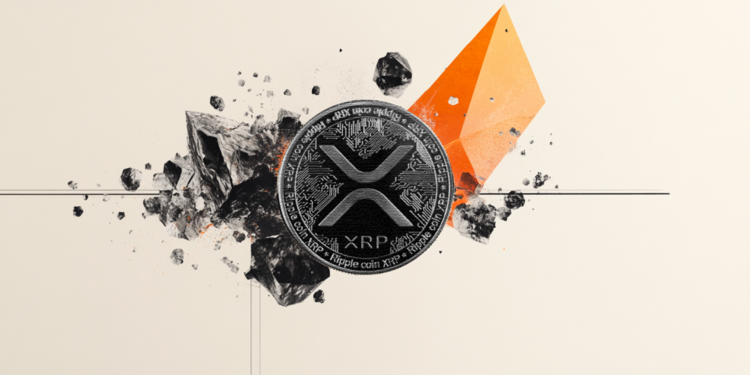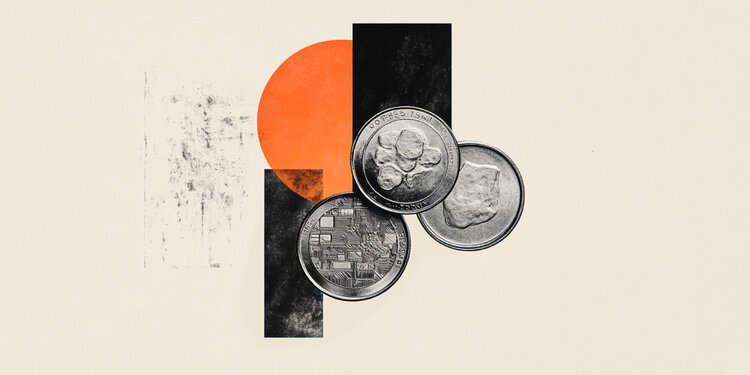- Gold price trades with a positive bias for the sixth straight day and stands tall near the all-time peak.
- Reduced June Fed rate cut bets continue to underpin the USD and might act as a headwind for the metal.
- The cautious market mood, along with geopolitical risks, could lend support to the safe-haven XAU/USD.
Gold price (XAU/USD) trades with a positive bias for the sixth successive day on Tuesday and remains well within the striking distance of the all-time peak, around the $2,265-$2,266 area touched the previous day. Geopolitical tensions were ratcheted up following reports that an Israeli strike hit a building next to Iran’s embassy in Syria’s capital. This, along with doubt over whether the Federal Reserve (Fed) will cut interest rates three times this year, takes its toll on the global risk sentiment and acts as a tailwind for the safe-haven precious metal.
Meanwhile, the upbeat US manufacturing data released on Monday forced investors to trim their bets for a June Fed rate cut. This remains supportive of elevated US Treasury bond yields and lifts the US Dollar (USD) to its highest level since February 14, which, in turn, keeps a lid on any further appreciating move for the non-yielding Gold price. Bulls also prefer to wait for some near-term consolidation amid overstretched conditions on the daily chart, ahead of the US macro data and speeches by a slew of influential FOMC members later today.
Daily Digest Market Movers: Gold price remains well supported by Fed rate cut bets and geopolitical risks
- The Institute for Supply Management reported that the US manufacturing sector expanded in March after 16 straight months of contraction, forcing investors to trim their bets for a June rate cut by the Federal Reserve.
- The shift in expectations lifts the yield on the rate-sensitive two-year and the benchmark 10-year US government bonds to a two-week peak, which underpins the US Dollar and exerts some pressure on the Gold price.
- A sharp rise in the US Treasury bond yields, along with the risk of a further escalation of geopolitical tensions in the Middle East, tempers investors’ appetite for riskier assets and lends support to the safe-haven XAU/USD.
- Israeli air strikes destroyed the Iranian embassy’s consular annex in Syria on Monday, killing seven members, including a top Revolutionary Guard commander, and fuelling fears of further violence between Israel and Iran’s allies.
- Moreover, the US PCE Price Index released on Friday indicated a moderate rise in inflation during February and kept Fed rate cut hopes on the table, which should contribute to limiting the downside for the non-yielding metal.
- Tuesday’s US economic docket features the release of JOLTS Job Openings and Factory Orders, which, along with speeches by a slew of influential FOMC members, should drive the USD demand and provide a fresh impetus.
Technical Analysis: Gold price bulls turn cautious amid overbought RSI, downside potential seems limited
From a technical perspective, the Relative Strength Index (RSI) on the daily chart is flashing overbought conditions, which makes it prudent to wait for some near-term consolidation or a modest pullback before the next leg up. That said, any meaningful corrective decline is more likely to find decent support and attract fresh buyers near the $2,223 region, or the previous record high. This should help limit the downside near the $2,200 mark, which should now act as a key pivotal point for the Gold price. A convincing break below the latter might prompt some technical selling and pave the way for deeper losses.
On the flip side, the $2,265-2,266 region, or a fresh record peak touched on Monday, now seems to act as an immediate hurdle for the Gold price. A sustained strength beyond should allow the XAU/USD to prolong its appreciating move further towards conquering the $2,300 round-figure mark.
Risk sentiment FAQs
In the world of financial jargon the two widely used terms “risk-on” and “risk off” refer to the level of risk that investors are willing to stomach during the period referenced. In a “risk-on” market, investors are optimistic about the future and more willing to buy risky assets. In a “risk-off” market investors start to ‘play it safe’ because they are worried about the future, and therefore buy less risky assets that are more certain of bringing a return, even if it is relatively modest.
Typically, during periods of “risk-on”, stock markets will rise, most commodities – except Gold – will also gain in value, since they benefit from a positive growth outlook. The currencies of nations that are heavy commodity exporters strengthen because of increased demand, and Cryptocurrencies rise. In a “risk-off” market, Bonds go up – especially major government Bonds – Gold shines, and safe-haven currencies such as the Japanese Yen, Swiss Franc and US Dollar all benefit.
The Australian Dollar (AUD), the Canadian Dollar (CAD), the New Zealand Dollar (NZD) and minor FX like the Ruble (RUB) and the South African Rand (ZAR), all tend to rise in markets that are “risk-on”. This is because the economies of these currencies are heavily reliant on commodity exports for growth, and commodities tend to rise in price during risk-on periods. This is because investors foresee greater demand for raw materials in the future due to heightened economic activity.
The major currencies that tend to rise during periods of “risk-off” are the US Dollar (USD), the Japanese Yen (JPY) and the Swiss Franc (CHF). The US Dollar, because it is the world’s reserve currency, and because in times of crisis investors buy US government debt, which is seen as safe because the largest economy in the world is unlikely to default. The Yen, from increased demand for Japanese government bonds, because a high proportion are held by domestic investors who are unlikely to dump them – even in a crisis. The Swiss Franc, because strict Swiss banking laws offer investors enhanced capital protection.

























